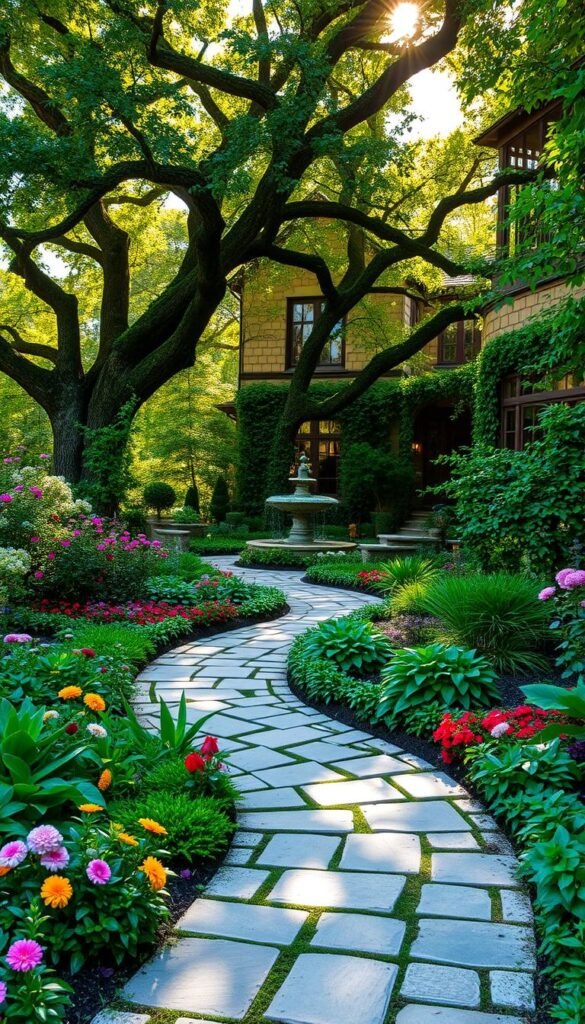When landscape and architecture work together, your property becomes more than just a house with plants. It transforms into a cohesive space where every detail feels intentional. The secret? Designing outdoor areas that mirror your home’s unique character while enhancing its natural beauty.
Think of your yard as an extension of your living room. Colors, textures, and shapes in your garden should echo those found in your home’s exterior. For example, a modern farmhouse might pair clean-lined raised beds with rustic stone pathways, while a mid-century ranch could feature angular planters and drought-tolerant grasses.
This approach goes beyond aesthetics. Strategic design strengthens the connection between indoor and outdoor areas, making both feel larger and more functional. Materials like brick, wood, or metal used in your home’s facade can be repeated in planter boxes or patio furniture for visual harmony.
Need inspiration? Explore our guide to elevating your outdoor space with smart design choices. From geometric layouts to organic wildflower beds, the right balance creates a welcoming atmosphere that reflects your personal taste.
Professional landscapers often emphasize this relationship. They consider rooflines, window placements, and even historical influences when planning gardens. Whether updating existing features or starting fresh, every choice should feel like a natural continuation of your home’s story.
Understanding Your Home’s Architectural Identity
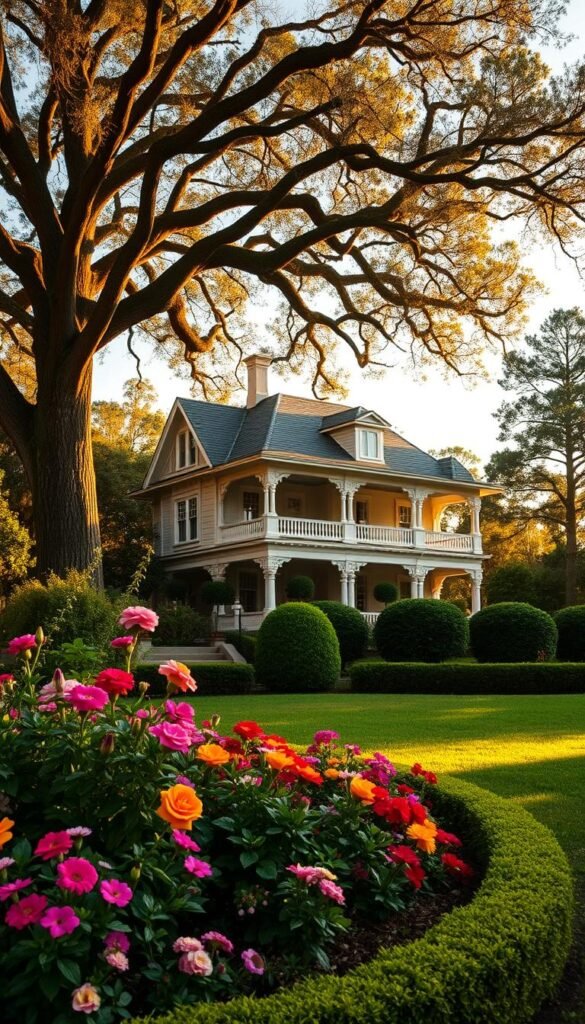
Your home’s design tells a story through its materials and shapes. Like a fingerprint, its unique architecture offers clues for crafting outdoor spaces that feel connected to your living environment. Start by identifying key characteristics – are your rooflines angular or curved? Do windows feature crisp lines or ornamental details?
Recognizing Modern, Rustic, and Transitional Styles
- Modern architecture thrives on simplicity: geometric planters, linear hedges, and monochromatic palettes mirror sleek building designs
- Rustic homes shine with irregular stone paths and native grasses that echo natural landscapes
- Transitional blends both worlds – think structured seating areas surrounded by wildflower borders
How Architecture Influences Garden Layout
A mid-century ranch’s horizontal lines might inspire low-profile succulents in repeating patterns. For Victorian homes, consider circular flower beds that mirror rounded turrets. Proportions matter too – a sprawling farmhouse needs larger-scale plantings to match its grandeur.
Notice how materials create continuity. Brick facades pair beautifully with terracotta pots, while cedar siding suggests wooden trellises. Even color schemes matter: match your front door’s hue to blooming flowers for instant cohesion.
Planning Your Landscape with Design Principles
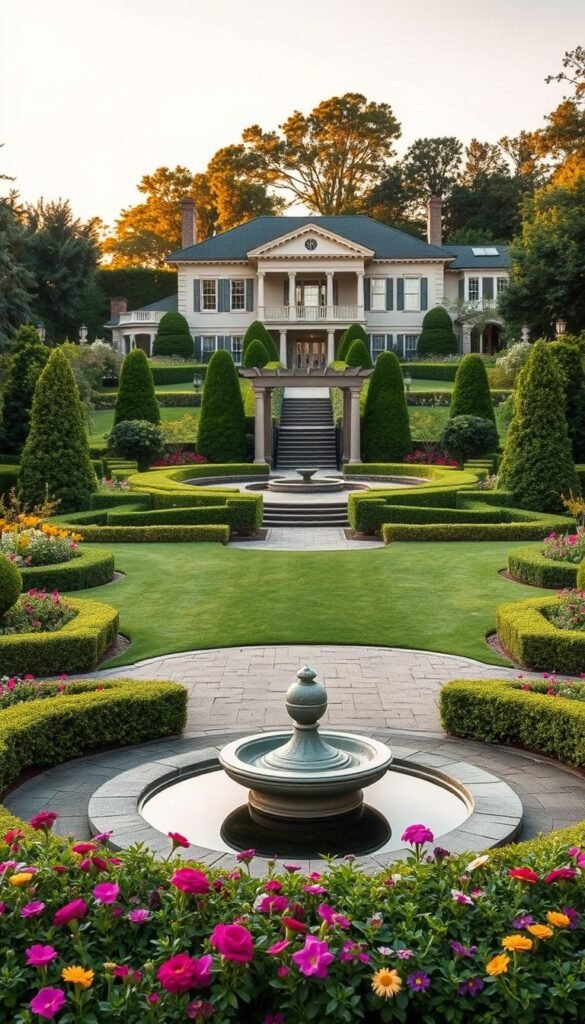
Great outdoor spaces feel like natural extensions of your home, not afterthoughts. By applying core design principles, you create spaces that flow effortlessly from your doorstep to your garden’s farthest corner. These concepts help translate your property’s potential into reality.
Evaluating Space, Scale, and Proportion
Start by mapping how your space interacts with your home’s footprint. Notice where windows frame garden views or where pathways naturally guide movement. A successful landscape design considers these existing patterns while introducing new elements.
Scale matters most when choosing plants and features. Tall trees might overwhelm a cottage-style house but perfect for a grand estate. Proportion works similarly – match planter heights to porch railings or patio sizes to backyard dimensions.
Establishing a Unified Theme
Visual harmony emerges when materials and shapes repeat throughout your property. Try matching brick walkways to chimney details or echoing roof angles in trellis designs. This repetition creates rhythm without monotony.
Balance comes in two forms: symmetrical (mirror-image planting beds) or asymmetrical (grouping different-sized shrubs for equal visual weight). Both approaches work when they respect your home’s design language.
For transitional styles, consider blending eras through mixed materials. A steel fire pit might complement contemporary siding, while vintage-style lighting softens the look. Every choice should reinforce the connection between built and grown environments.
Creating a Garden That Complements Your Home’s Architectural Style
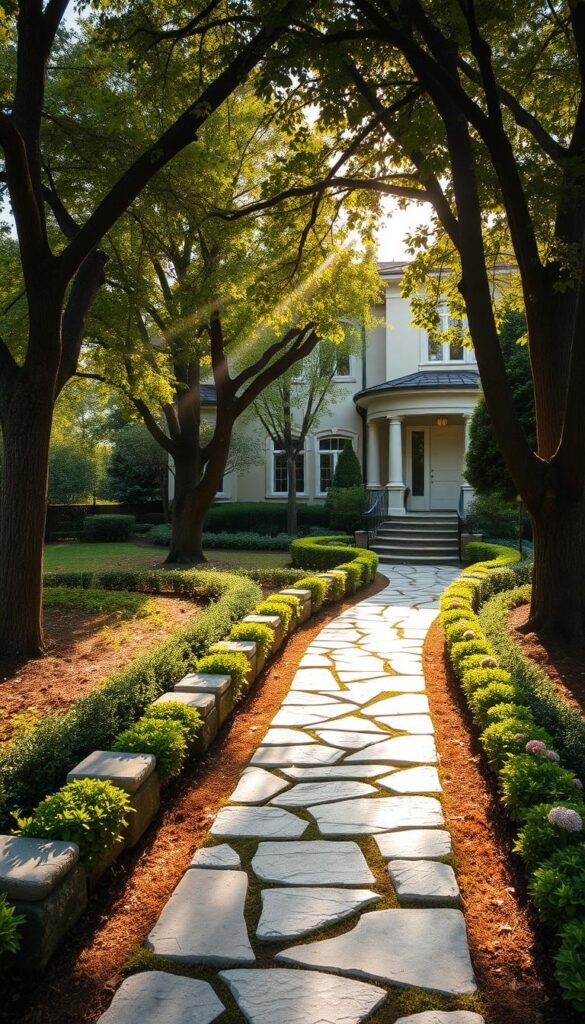
The most successful landscapes feel like they grew alongside your house. By mirroring your property’s structural elements and material palette, you craft outdoor areas that appear thoughtfully planned rather than randomly assembled.
Aligning Your Outdoor Space with Structural Elements
Notice how your rooflines or window frames create visual patterns. A Craftsman bungalow’s exposed beams could inspire matching wooden trellises, while a modern cube-shaped house might pair with angular concrete planters. This approach turns your garden into a three-dimensional extension of your living space.
In regions like Bozeman, where natural stone dominates home exteriors, repeating this material in retaining walls or fire pits strengthens visual ties. Large boulders placed strategically near entryways echo mountainous surroundings while grounding the design.
Matching Materials and Finishes for Seamless Integration
Your brick chimney isn’t just a house feature – it’s inspiration for patio edging. Weathered wood siding suggests using reclaimed timber for raised beds. When textures and finishes align, your eyes glide effortlessly from building to garden.
Consider proportions too. A grand Colonial home needs substantial planter boxes to match its scale, while a cottage-style property shines with smaller, irregular stone borders. As one Montana landscaper notes: “Materials are the silent language connecting architecture to earth.”
Incorporating Color, Texture, and Shape
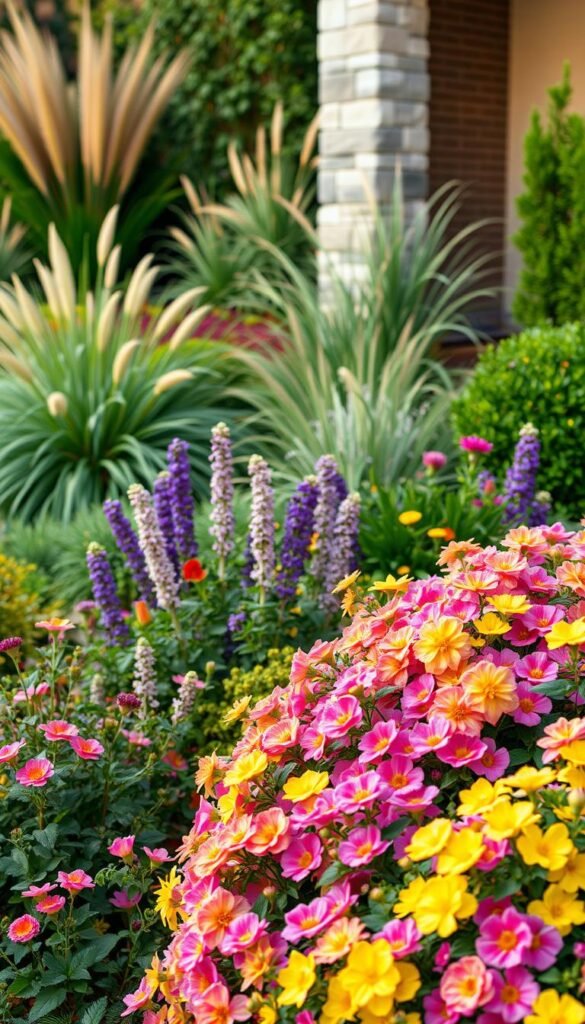
Your home’s exterior tells a color story through its materials. Whether brick, stone, or siding, these surfaces hold visual cues for building a cohesive landscape. The trick? Let your property’s existing palette guide your plant choices to strengthen its aesthetics without overwhelming the senses.
Harmonizing Exterior Colors with Plant Choices
Warm-toned homes with terracotta or wood accents shine alongside plants in creamy whites and earthy pinks. Think hydrangeas or coral bells for soft contrast. Cool gray or blue exteriors? Pair them with lavender blooms and silver foliage plants like Russian sage for a crisp, modern look.
Texture matters just as much as color. Smooth stucco walls call for bold hostas or spiky yucca to create interest. Rough stone facades soften beautifully with feathery grasses or lamb’s ear. As one designer notes: “Plants should converse with your home’s surfaces, not argue with them.”
Shape ties everything together. Angular architecture loves upright junipers or boxwood hedges. Curved rooflines? Try rounded shrubs like hydrangeas. This approach creates rhythm while respecting your property’s unique appeal.
For year-round cohesion, focus on foliage. Burgundy heuchera leaves complement red brick, while chartreuse sedum brightens gray stone. Discover more curb appeal strategies that make your landscape feel like a natural extension of your living space.
Utilizing Natural Elements and Hardscape Features
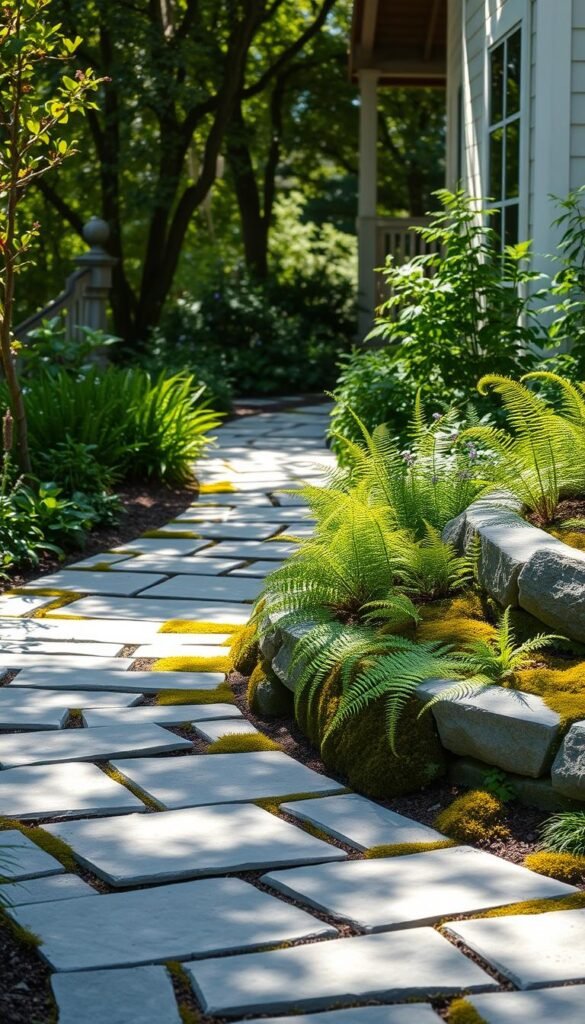
Strategic combinations of stone, wood, and greenery bridge the gap between architecture and nature. These elements act as visual translators, turning disjointed spaces into unified outdoor experiences. Start by observing your home’s existing materials – their textures and tones hold the blueprint for cohesive design.
Selecting Stone, Wood, and Metal for a Cohesive Look
Natural stone anchors your landscape to the earth while mirroring home exteriors. Use matching stone types for pathways and retaining walls to create rhythm. Wooden pergolas or fences should echo your home’s trim or siding – cedar with cedar, mahogany with mahogany.
Metal accents demand precision. Wrought iron gates complement traditional homes, while corten steel planters suit modern designs. One Montana designer notes: “Metalwork should whisper, not shout – let it repeat motifs from your window grilles or light fixtures.”
Choosing Trees and Plants to Enhance Aesthetics
Columnar evergreens frame contemporary homes like living walls, while flowering dogwoods soften colonial facades. Consider these pairings:
- Modern ranch? Try ornamental grasses and symmetrical boxwoods
- Craftsman bungalow? Hydrangeas and ferns enhance handcrafted details
- Desert adobe? Agaves and palo verde trees mirror earthy tones
Pathways tie everything together. Gravel suits cottage gardens, while bluestone slabs ground formal entries. Let your home’s lines guide their curves or angles.
Designing Inviting Outdoor Living Spaces
Your yard becomes a natural extension home when you mirror indoor comfort outdoors. Define outdoor spaces with pergolas or hedges that echo your interior layout. These living areas gain purpose when designed for connection – think dining nooks beside kitchen windows or fire pits visible from living rooms.
Pathways, Seating, and Hidden Treasures
Pathways do more than guide feet – they frame views of your property’s best features. Curved gravel walks suit cottage styles, while geometric pavers complement modern lines. Always leave space for benches or built-in seating where people can pause and soak in the environment.
Divide large yards into intimate spaces using strategic planters or trellises. A cedar screen near a hot tub mimics wood siding, while steel arbors repeat balcony rail patterns. Lighting plays double duty: soft uplights showcase architectural details, while path markers ensure safe evening strolls.
Every great outdoor living zone needs a focal point. Try a bubbling fountain near a seating area or a specimen tree that draws the eye upward. These elements create memorable experiences while reinforcing your home’s unique character.

